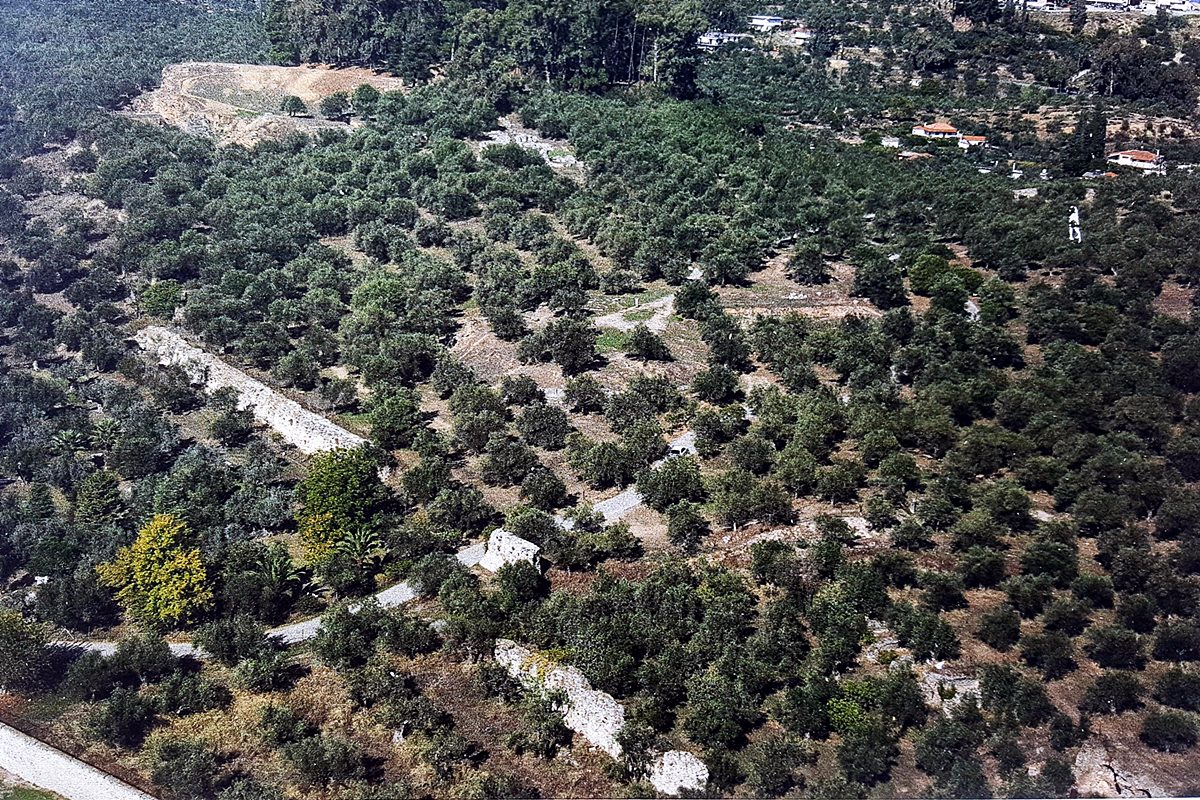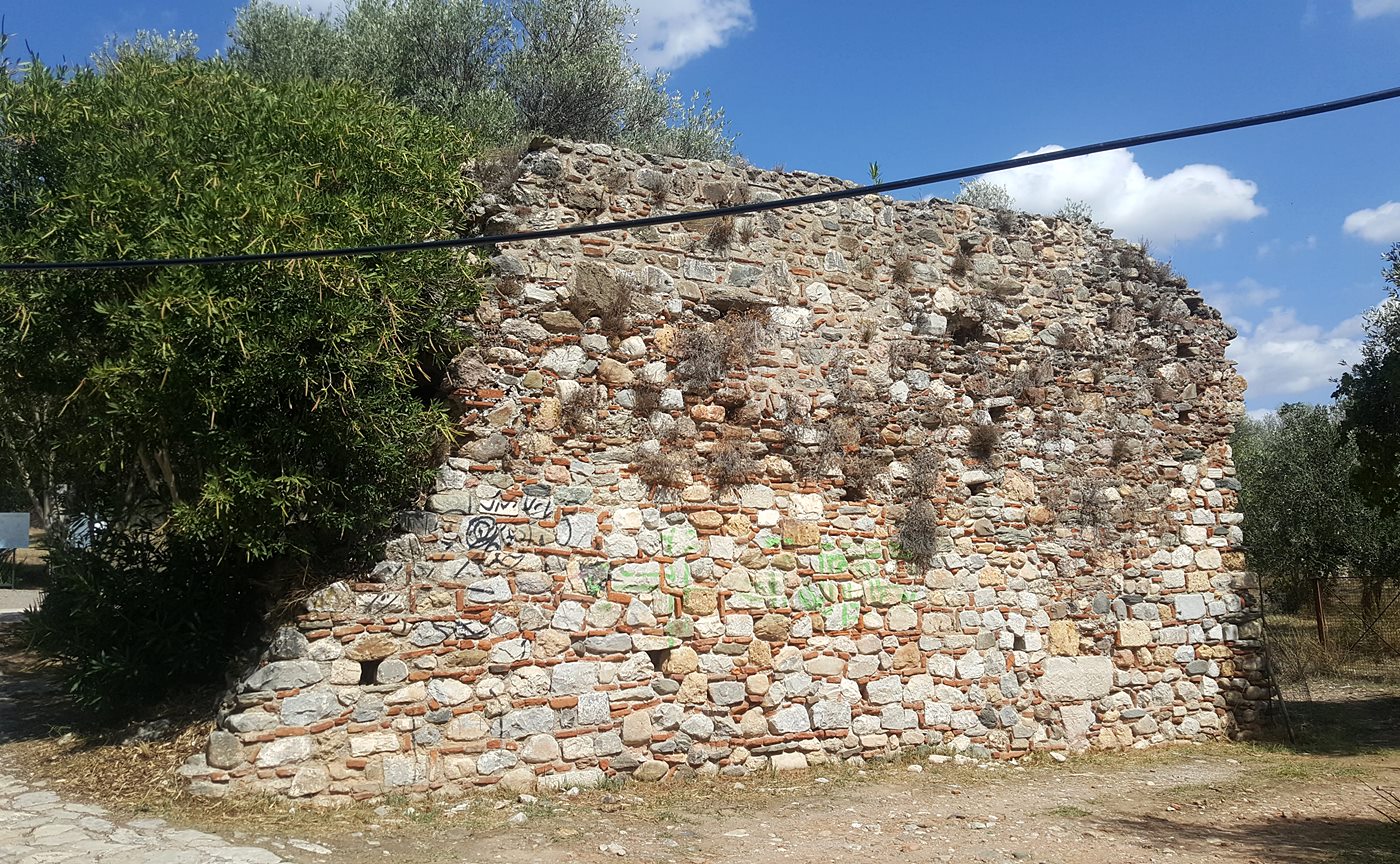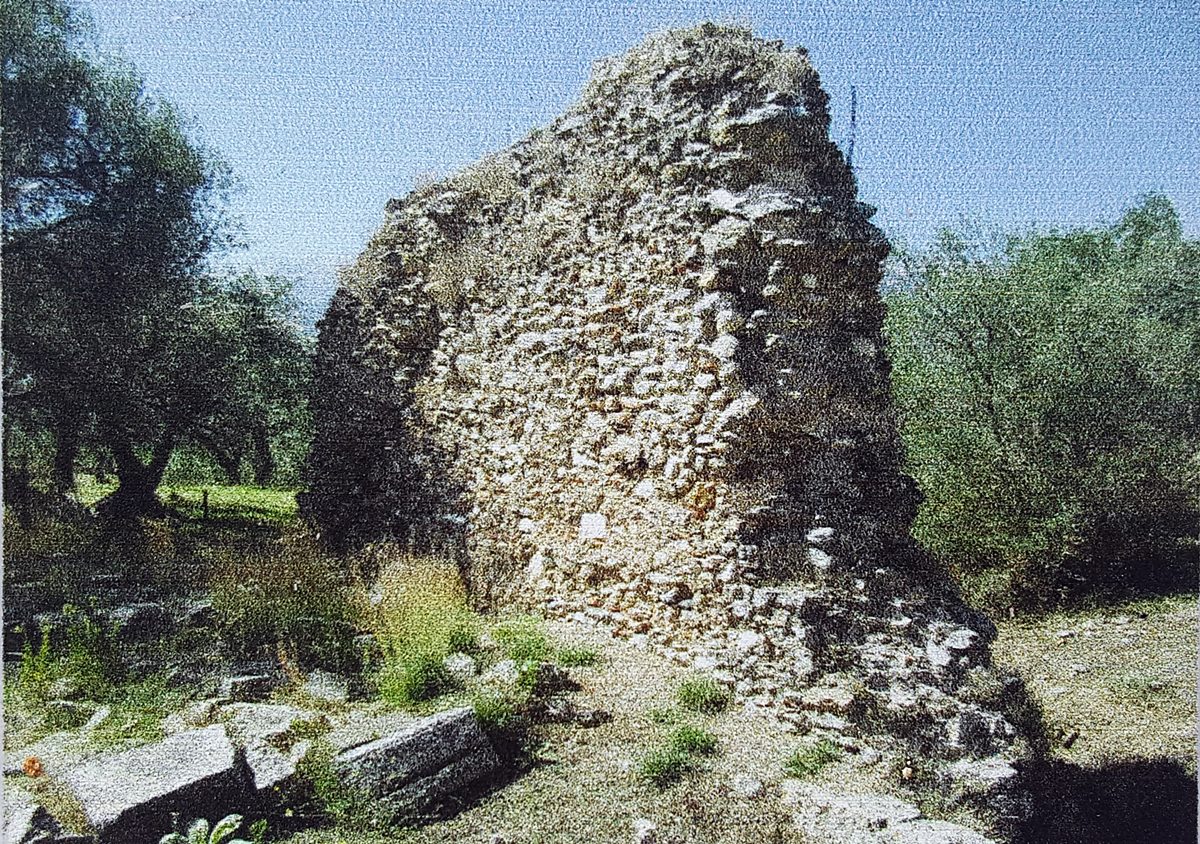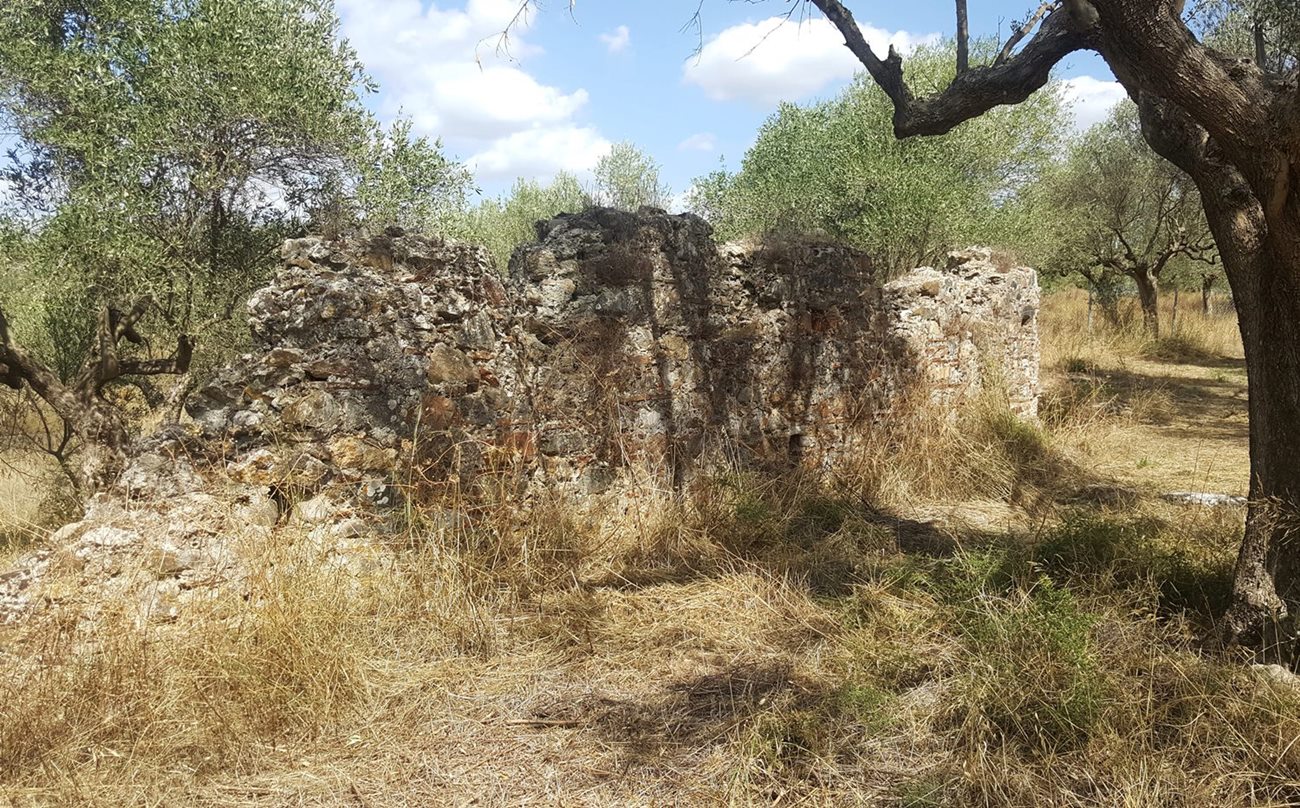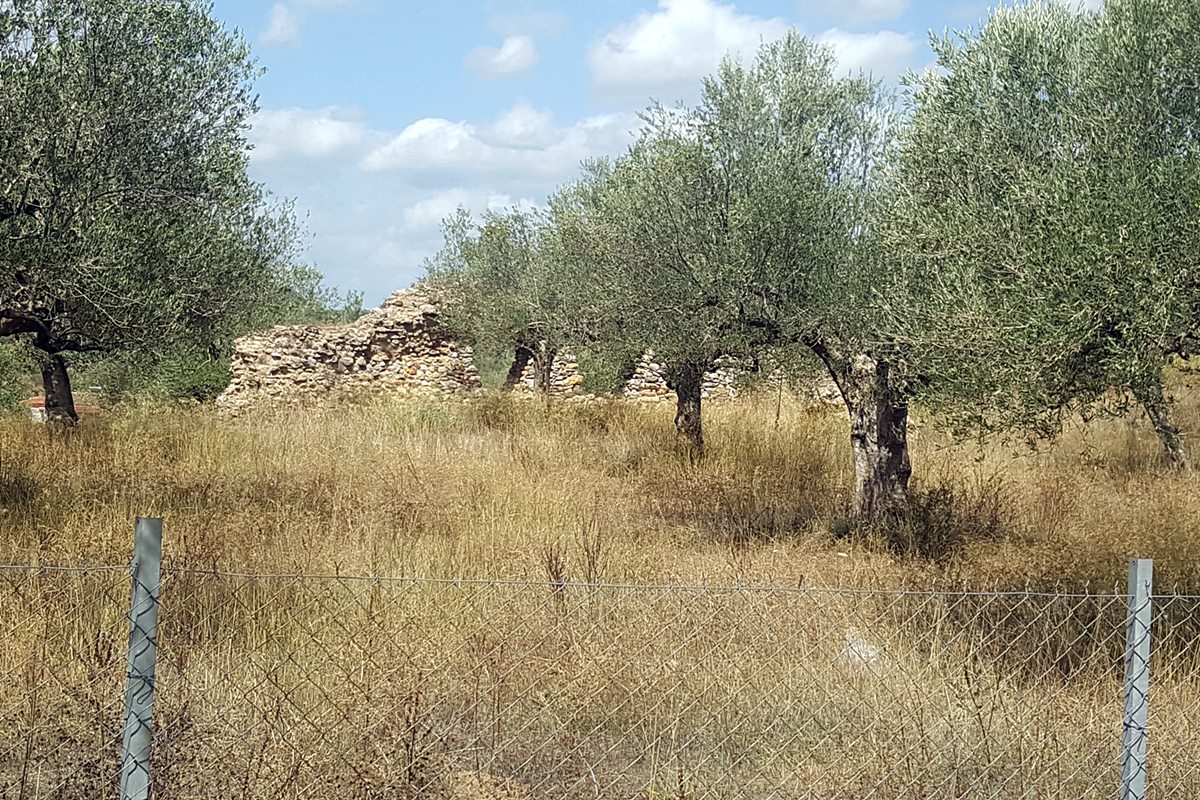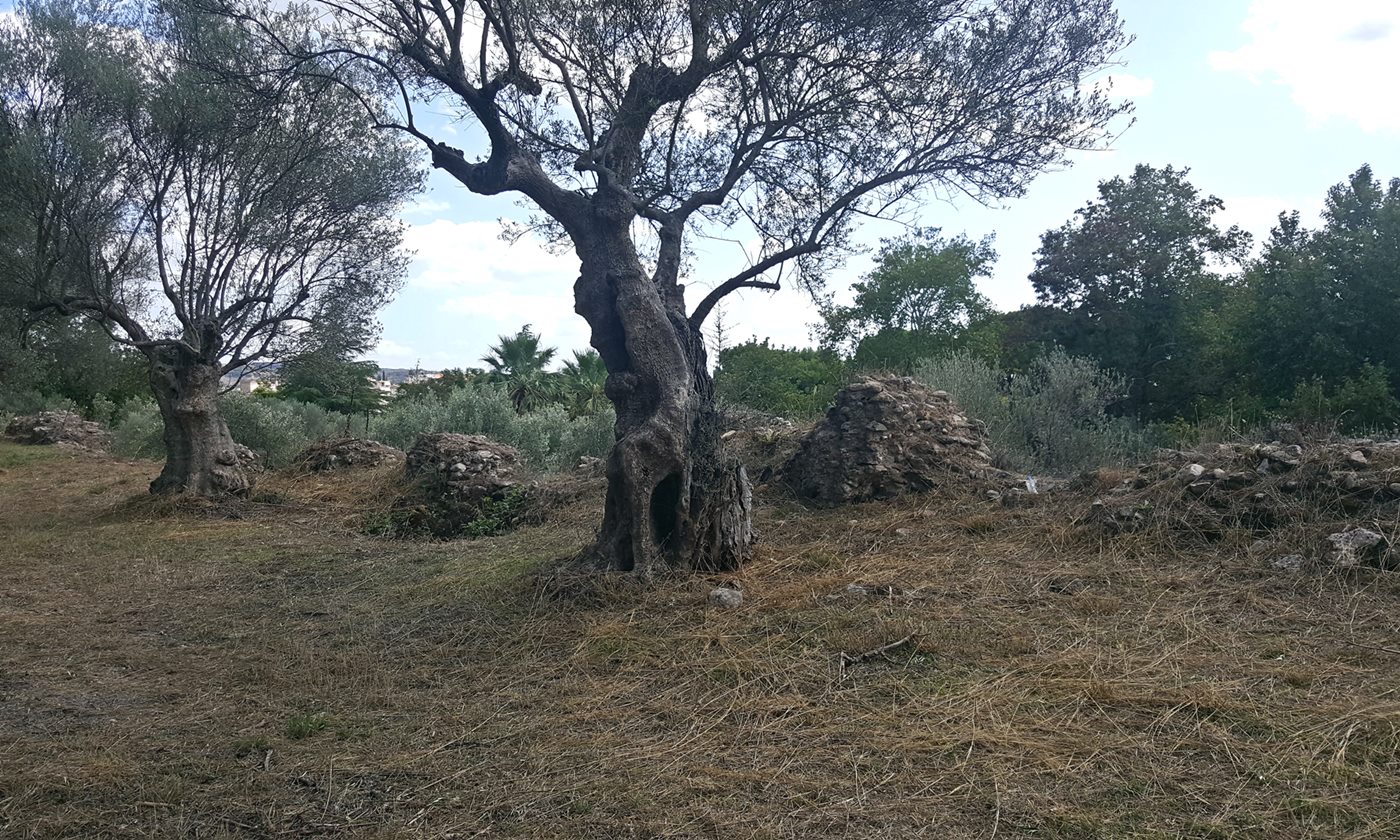Sparta, Sparta, Laconia,Peloponnese
Citadel of Sparta
| Location: |
| At the archeological site of the citadel of Sparta, on the north side of the modern city |
| Region > Prefecture: | 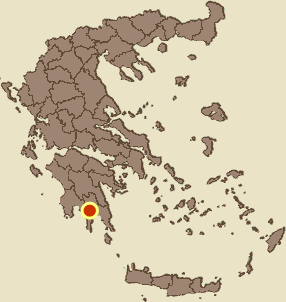 |
| Peloponnese Laconia | |
| Municipality > Town: | |
| City of Sparta • Sparta | |
| Altitude: | |
|
Elevation ≈ 240 m (Relative Height≈20 m) |
| Time of Construction | Origin | |
| perhaps 4th cent. | Early ΒΥΖΑΝΤΙΝΕ |
|
| Castle Type | Condition | |
| Ancient City |
In Ruins
|
Remains from the fortification of the ancient citadel of Sparta. The fortification was in use during the first centuries of the Middle Ages, ie during the Early Byzantine period.
History
Sparta of the classical period had, as is well known, no walls. The Acropolis that survives today is newer and includes buildings that belong, for the most part, to the Roman imperial period. The fortification is even later and must have been created at the time when the barbarian raids began, in the 3rd or 4th century AD.
Abstract from the sign of the Ephorate of Antiquities that exists in the site:
The Late Roman wall surrounds the acropolis hill and the plateau of Paleokastro. The wall, which had towers and gates, is a strong construction of raw stones, bricks and a large number of stone and marble architectural members that come from previous buildings of the Acropolis and the Agora. Although the construction is sometimes related to the raids of the Herules (267 AD) and of Alarichos (396 AD), we do not have reliable data for its dating.
The wall is therefore Late-Roman; we could call it early-Byzantine. Its use continued until the end of the 6th century, when the city was abandoned due to the descent of the Slavs. Or, possibly, a little earlier, towards the end of Justinian's reign. In any case, during this period (4th to 6th century) Sparta has declined to an insignificant city being isolated inland and in a not well protected location.
The Chronicle of Monemvasia states that the inhabitants of Sparta left the city to take refuge in Monemvasia, while some settled in Sicily, after a Slavic invasion in 587-588 AD. Today, this is believed to be only partially true, as the city had begun to decline long before that.
After the end of the “dark ages”, ie from the 10th century onwards, the area seems to have come to life a little, judging by the ruins of the large basilica that survives on the Acropolis and which dates from the 10th century and It is believed that it was the church that was dedicated to Saint Nikon. However, Sparta did not become an important city again and its fortification did not accept interventions; so it never became a dependable castle during the mid-Byzantine / late-Byzantine period.
Structure, Fortification & Buildings
The Late Roman fortifications included an outer wall and an inner one that protected the citadel. Today, few traces and fragments of the inner enclosure are preserved in some places, such as the part of the wall next to the east gate of the archeological site (photo 2).
Large parts of the outer curtain wall on the southeast side are also preserved, inside the olive grove that surrounds the citadel (see layout and photo 1).
Inside the acropolis, apart from the basilica of Saint Nikon, there are important monuments, such as the ancient theater, the so-called “circular” building (of unknown usage), the Sanctuary of Chalkioikos Athena of (6th century BC) etc.
| First entry in Kastrologos: | February 2022 |
Sources
- ΑΡΧΑΙΟΛΟΓΙΚΟΝ ΔΕΛΤΙΟΝ, τεύχος 25-Β1, 1970, «Μεσαιωνικόν φρούριον Σπάρτης», σελ. 209
|
|
| Access |
|---|
| Entrance: |
| Free entrance. |



